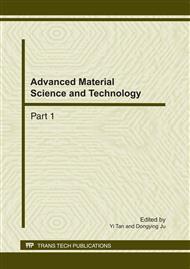p.1237
p.1241
p.1245
p.1249
p.1253
p.1259
p.1263
p.1267
p.1271
Improvement in Wear and Corrosive Wear Resistance of Ti6Al4V Alloy by Double Glow Plasma Surface Alloying with W-Mo and W-Mo-N
Abstract:
W-Mo and W-Mo-N surface-modified layers on Ti6Al4V alloy were obtained using a double glow plasma surface alloying technique. The morphology, microstructure, and chemical composition distribution of the modified layers were analyzed by scanning electron microscope, Xray diffraction, and glow discharge optical emission spectrometry. The hardness and toughness of the modified layers were measured using a micro-hardness tester, and dynamic repeating press equipment. The wear resistance in ambient air and the corrosive wear resistance in NaCl solution were evaluated using a ball-on-disk wear tester. The results show that W-Mo and W-Mo-N surface modified layers are composed of the alloying layers which vary in composition and phase form along the depth. A microhardness gradient was observed in the modified-surface layers. The surface hardness of the W-Mo-N and W-Mo modified layers was 25.3 and 14.2 GPa, which is seven-fold and 3.9-fold harder than the Ti6Al4V substrate, respectively. W-Mo and W-Mo-N surface-modified layers significantly improved the wear and corrosion resistance of Ti6Al4V. It seems that the wear resistance of W-Mo and W-Mo-N surface-modified layers in NaCl solution is better than that in ambient air owing to the strong lubricating effect of NaCl solution and the excellent corrosion resistance of the modified layers.
Info:
Periodical:
Pages:
1253-1257
Citation:
Online since:
February 2011
Authors:
Keywords:
Price:
Сopyright:
© 2011 Trans Tech Publications Ltd. All Rights Reserved
Share:
Citation:


